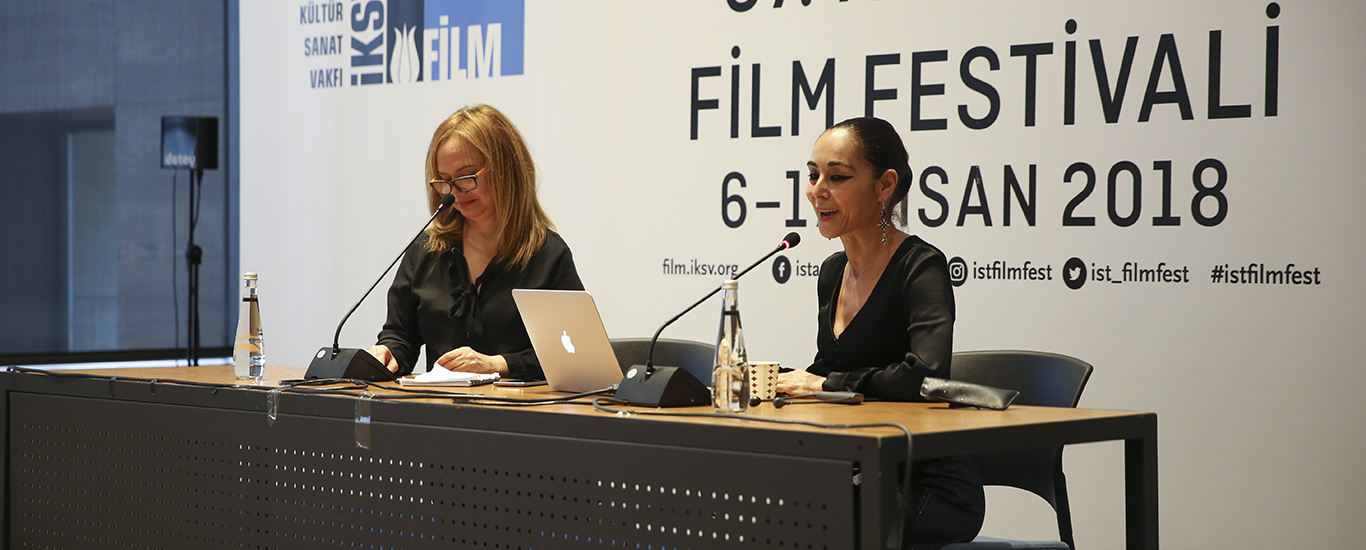Sunday, April 15
Iranian-born, New Yorker artist and filmmaker Shirin Neshat gave the last talk of the festival at Yapı Kredi Kültür Sanat with film critic Esin Küçüktepepınar. The artist is also among the festival’s “Human Rights in Cinema Competition” this year, and she talked about her works of photography and video, and shared her experience in filmmaking.
Neshat said that she has a poetic language, creates works that are intertwined with literature and history, and added that there’s always a melancholy and darkness in her works reflecting her own life experience: “First of all, I’m an artist; then I’m a woman artist; then I’m an Iranian woman artist. My biggest inspiration is Middle Eastern women. I associate my works with their lives of struggle.” She also commented on the use of poetry on photographs: “I like writing on photographs because those poems become the voice of those bodies. Music in a way…”
The artist shot Women without Men first, and then Looking for Oum Kulthum which was part of the festival this year: “I always choose the most difficult projects. There’s no film about Oum Kulthum, not even by Egyptian filmmakers, because she is still a sacred figure. We make films with very limited budgets. That’s why I want to especially show that they’re not perfect. Sometimes you spend six years working on something and become successful but this success is not perfect. That’s why when we begin making a film, we know that it’s not going to be seen by many people. We don’t make these films so everyone would watch and like it. When I’m writing the screenplay, I always get support; more importantly I think about ‘how I can convey this story to the audience.’ I can say that I’ve been influenced by such directors as Kiarostami, Bergman and Tarkovsky.” Neshat commented on why there are not as many women in cinema industry: “The stories women want to tell are very different from the ones that men tell. The audience want to see what men want to tell.”
The artist had to migrate from her country after the revolution in 1979, and said that she sees Turkey as a substitute for Iran where she cannot return or take her works anymore. Neshat also said that migration is a continuous process: “I think that if I hadn’t experienced these things, I wouldn’t have become an artist. I don’t want to make a film about Iran someday; I don’t think I could. But I will always create as an Iranian artist.” The artist also said that she sees her art as a means to be the voice to some other people and to change the world.”
Neshat also shared that, in order to take her cinematic experience to an upper level, she has an idea of a project in which she can bring together cinematographic elements with visual art, and the audience would walk inside the film.”
Photo: Elif Gökçe










